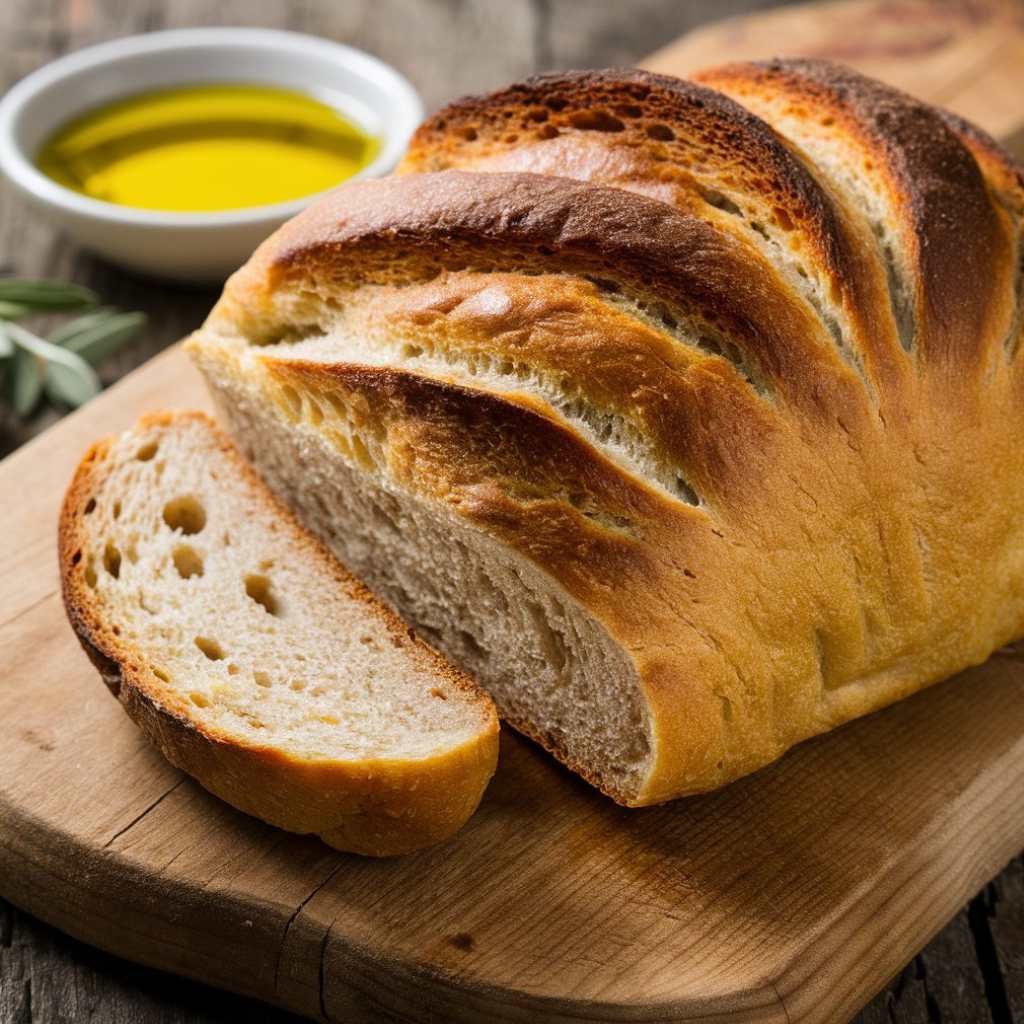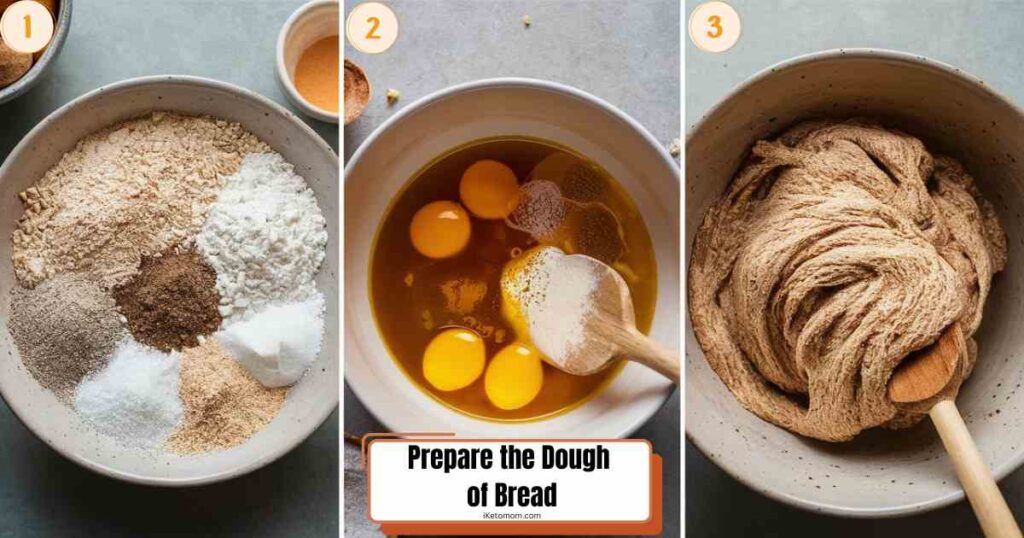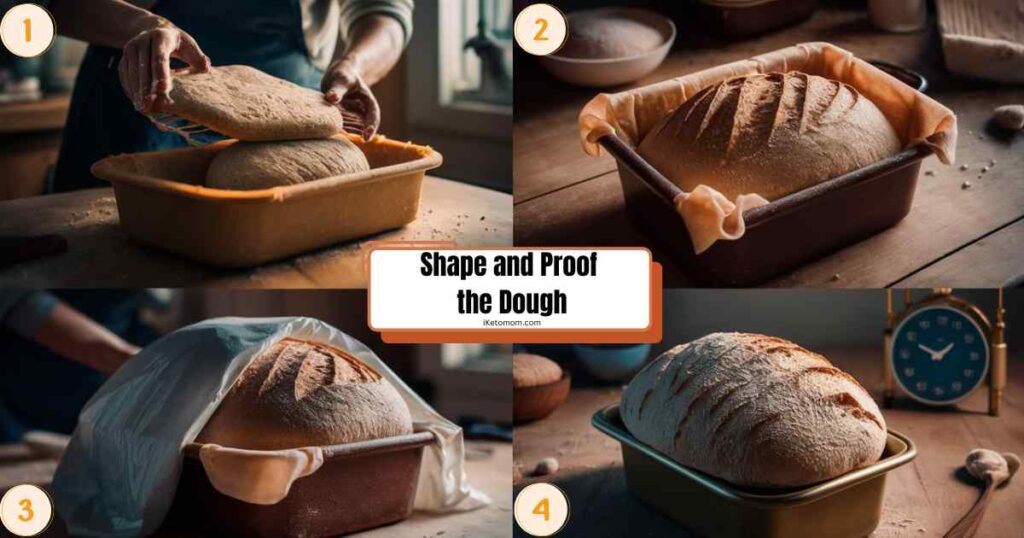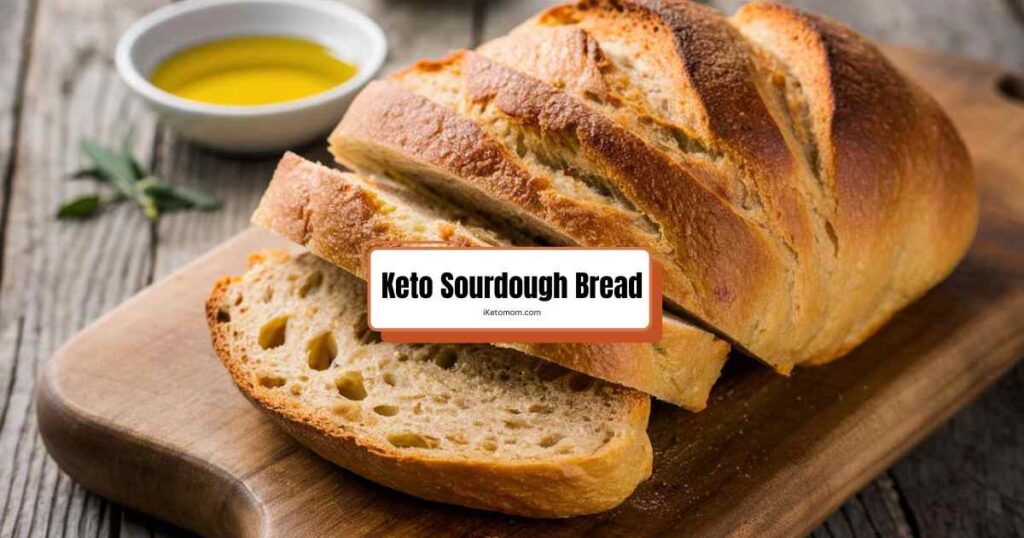Keto Sourdough Bread represents a creative adaptation of this beloved classic to fit within the constraints of a ketogenic diet. Unlike traditional sourdough, which relies heavily on wheat flour and long fermentation times, keto sourdough utilizes low-carb alternatives such as almond flour and coconut flour. These flours are rich in healthy fats and fiber while being significantly lower in carbohydrates compared to wheat flour, aligning with the high-fat, low-carbohydrate principles of keto diets.
Sourdough bread has garnered widespread popularity not only for its distinct tangy flavor but also for its natural fermentation process, which offers potential health benefits. Traditional sourdough is known for its robust flavor developed through a slow fermentation process using wild yeast and lactobacilli bacteria. This process not only enhances the bread’s taste but also breaks down gluten and phytic acid, potentially making it easier to digest.
Moreover, keto sourdough bread often incorporates psyllium husk powder, which helps mimic the binding and texture properties of gluten found in traditional bread. This ingredient also adds additional fiber, aiding in digestion and promoting a feeling of fullness.
While keto sourdough lacks the gluten and long fermentation process of traditional sourdough, it still aims to capture its distinctive sourdough flavor profile through methods such as adding apple cider vinegar or using a keto-friendly sourdough starter. These adaptations ensure that individuals following a ketogenic lifestyle can enjoy a flavorful bread that fits their dietary needs while still embracing the essence of sourdough’s artisanal appeal.
Keto Sourdough Bread Recipe
Ingredients
Here are the ingredients for Keto Sourdough Bread, detailed with their roles and quantities:
Dry Ingredients:
- Almond Flour – 1 cup
- Almond flour is the main base for this bread, providing a low-carb, gluten-free alternative to regular flour. It adds a slightly nutty flavor and a soft texture.
- Coconut Flour – 1/4 cup
- Coconut flour is very absorbent and helps balance the moisture in the recipe, preventing the bread from being too dense or oily. It also adds a bit of natural sweetness.
- Psyllium Husk Powder – 1 tablespoon
- Psyllium husk adds fiber and helps bind the ingredients together, giving the bread structure and a chewy, bread-like texture. It also helps retain moisture.
- Baking Powder – 1 teaspoon
- Baking powder acts as a leavening agent, giving the bread a bit of rise and a lighter texture.
- Salt – 1/2 teaspoon
- Salt enhances the overall flavor and balances the natural nuttiness of the almond and coconut flours.
Wet Ingredients:
- Keto-Friendly Sourdough Starter – 1/4 cup
- A keto-friendly sourdough starter adds the traditional sourdough flavor while keeping the recipe low-carb. You can make this starter using almond or coconut flour as the base. If you don’t have a sourdough starter, you can add 1 teaspoon of lemon juice or vinegar to mimic the tanginess.
- Eggs – 4 large
- Eggs add structure, moisture, and a bit of lift to the bread. Using 4 eggs gives the bread a slightly richer, more custard-like texture.
- Unsalted Butter (or Coconut Oil) – 1/4 cup, melted
- Melted butter adds fat, which is essential in keto recipes for flavor and texture. It also keeps the bread tender. If you’re dairy-free, you can substitute with coconut oil.
- Warm Water – 1/4 cup
- Water helps blend the ingredients and creates the right consistency for the dough. Adjust the water slightly as needed based on the dough’s texture.
- Apple Cider Vinegar (optional) – 1 teaspoon
- Apple cider vinegar is optional but recommended. It reacts with the baking powder to add more lift to the bread, making it fluffier and less dense.
Optional Add-ins:
- Herbs (e.g., rosemary, thyme):
- Enhance flavor and aroma, adding a savory touch to the bread.
- Seeds (e.g., chia, flax):
- Provide additional texture and nutrition, such as omega-3 fatty acids and fiber.
These ingredients work together to create a keto-friendly sourdough bread that is low in carbohydrates, rich in healthy fats and fiber, and suitable for those following ketogenic diets. Adjustments in quantity and type of optional add-ins can personalize the bread to suit individual tastes and dietary preferences.
Instructions
Step 1: Prepare the Dough of Bread
- Preheat Oven and Prepare Pan
- Preheat your oven to 350°F (175°C). Line a loaf pan with parchment paper or lightly grease it to prevent sticking.
- Mix Dry Ingredients
- In a large mixing bowl, combine 1 cup almond flour, 1/4 cup coconut flour, 1 tablespoon psyllium husk powder, 1 teaspoon baking powder, and 1/2 teaspoon salt. Whisk thoroughly to remove any lumps and ensure the ingredients are well blended.
- Mix Wet Ingredients
- In a separate bowl, add 1/4 cup keto-friendly sourdough starter, 4 large eggs, 1/4 cup melted unsalted butter (or coconut oil for dairy-free), 1/4 cup warm water, and 1 teaspoon apple cider vinegar (optional). Whisk until smooth and well combined.
- Combine and Form Dough
- Gradually pour the wet ingredients into the dry ingredients, stirring continuously until a thick, uniform dough forms. Let the dough sit for 5 minutes to allow the psyllium husk and coconut flour to absorb moisture and firm up the texture.
Step 2: Shape and Proof the Dough
- Shape the Dough
- Transfer the dough to the prepared loaf pan. Using a spatula, smooth the top to create an even surface, shaping it gently into a loaf form if necessary. This step helps the bread bake evenly.
- Proof the Dough (Optional)
- While this keto bread doesn’t require a full proofing process, you can let it sit for 5-10 minutes in the pan to allow the ingredients to settle and slightly expand. This can give a better texture to the final loaf
Step 3: Bake and Cool
- Bake the Bread
- Place the loaf pan in the preheated oven and bake for 45-50 minutes. The bread is ready when the top is golden brown and a toothpick inserted into the center comes out clean.
- Cool the Bread
- Remove the bread from the oven and allow it to cool in the pan for about 10 minutes. Then, carefully lift it out using the parchment paper and place it on a wire rack to cool completely before slicing. Cooling helps the bread firm up and improves its texture.
- Serve and Store
- Once fully cooled, slice and enjoy your keto sourdough bread. Store leftovers in an airtight container in the refrigerator for up to a week.
This recipe yields a delicious Keto Sourdough Bread that’s perfect for toast, sandwiches, or enjoying on its own. Adjust baking times as needed based on your oven’s performance and desired level of browning. Enjoy your homemade keto-friendly bread!
Keto Sourdough Bread offers a unique twist on the beloved classic, providing a low-carb alternative that aligns with ketogenic dietary principles. Unlike traditional sourdough, which relies on wheat flour and a lengthy fermentation process to develop its signature tangy flavor and airy texture, keto sourdough utilizes almond flour, coconut flour, and psyllium husk powder. These ingredients not only reduce carbohydrate content but also add beneficial fats and dietary fiber, making the bread more satiating and supportive of ketosis, where the body burns fat for fuel.
The process of making keto sourdough bread involves creating a keto-friendly sourdough starter or using alternative leavening agents like baking powder combined with apple cider vinegar. This approach preserves the essence of sourdough’s complex flavor profile while catering to dietary restrictions. Keto sourdough bread is enjoyed for its versatility—whether toasted with butter, used in sandwiches, or paired with keto-friendly dips and spreads, it offers a flavorful and satisfying option for those seeking a low-carb bread alternative that doesn’t compromise on taste or texture.
Keto Sourdough Bread Nutrition Info
Here’s an approximate nutrition table for Keto Sourdough Bread per serving (assuming 1/12th of a loaf):
| Nutrient | Amount per Serving |
| Calories | 150-200 kcal |
| Total Fat | 12-15 g |
| – Saturated Fat | 1-2 g |
| Cholesterol | 70-80 mg |
| Sodium | 200-250 mg |
| Total Carbohydrates | 5-7 g |
| – Dietary Fiber | 3-4 g |
| – Sugars |
1 g (from natural sources)
|
| Protein | 6-8 g |
Note: Nutrition values can vary based on specific ingredients used and portion size. Adjustments may be necessary based on your recipe and ingredients. Always check product labels for accurate nutritional information.
Here’s a consolidated nutrition table for the main ingredients used in Keto Sourdough Bread, based on typical quantities and servings:
| Ingredient | Amount | Calories | Total Fat (g) | Saturated Fat (g) | Cholesterol (mg) | Sodium (mg) | Total Carbohydrates (g) | Dietary Fiber (g) | Sugars (g) | Protein (g) |
|---|---|---|---|---|---|---|---|---|---|---|
| Almond Flour | 2 cups | ~1440 | ~128 | ~10 | 0 | 0 | ~56 | ~24 | ~8 | ~56 |
| Coconut Flour | 1/4 cup | ~120 | ~4.5 | ~4 | 0 | 0 | ~16 | ~10 | ~6 | ~4 |
| Psyllium Husk Powder | 1/4 cup | ~60 | ~0.5 | 0 | 0 | 0 | ~26 | ~24 | 0 | ~2 |
| Eggs | 4 large | ~280 | ~20 | ~6 | ~840 | ~280 | ~2 | 0 | ~2 | ~24 |
| Water | 1 cup | 0 | 0 | 0 | 0 | 0 | 0 | 0 | 0 | 0 |
| Apple Cider Vinegar | 1 tablespoon | ~3 | 0 | 0 | 0 | ~0 | ~0.1 | 0 | ~0.1 | 0 |
Values are approximate and can vary based on specific brands and ingredients used. Calories and nutrients are based on typical serving sizes or quantities specified in the recipe.
Tips for Best Results
For achieving the best results when making Keto Sourdough Bread, consider the following tips:
- Quality Ingredients: Use fresh and high-quality almond flour, coconut flour, and psyllium husk powder to ensure optimal texture and flavor.
- Measure Accurately: Precision in measuring dry and wet ingredients is crucial for maintaining the correct consistency of the dough.
- Blend Thoroughly: Mix the dry ingredients well before adding the wet ingredients to ensure even distribution and avoid clumping.
- Let it Rest: Allow the dough to rest and hydrate fully before shaping and baking. This helps the psyllium husk absorb moisture and bind the ingredients effectively.
- Proper Proofing: Follow the proofing time specified in the recipe to allow the dough to rise adequately. This step enhances the bread’s texture and develops its flavor.
- Baking Temperature: Preheat your oven to the correct temperature (typically around 350°F or 175°C) to ensure even baking and a golden crust.
- Cooling Time: Let the baked bread cool completely on a wire rack before slicing. This prevents it from crumbling and allows flavors to settle.
- Storage: Store the cooled bread in an airtight container or wrap it well to maintain freshness. It can also be frozen for longer storage.
By following these tips, you’ll enhance the texture, flavor, and overall quality of your Keto Sourdough Bread, ensuring a delicious and satisfying outcome that fits well into your ketogenic lifestyle.
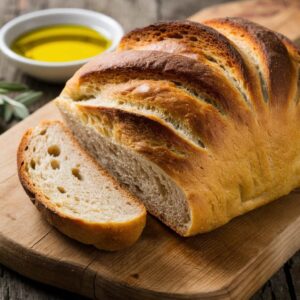
Keto Sourdough Bread Recipe
Equipment
- Mixing bowls For combining dry and wet ingredients.
- Measuring cups and spoons To accurately measure ingredients.
- Whisk or Hand Mixer For mixing the dough thoroughly.
- Spatula For scraping down the sides of the bowl and shaping the dough.
- Bread Loaf Pan: To shape and bake the bread.
- Parchment Paper or Non-stick Spray To line the bread loaf pan.
- Oven For baking the bread.
- Cooling Rack To cool the bread after baking.
- Kitchen Scale For precise measurement of ingredients.
- Dough Scraper: For handling and shaping the dough.
- Bread Proofing Basket (Banneton): To help shape and support the dough during proofing (optional if shaping by hand).
Ingredients
Dry Ingredients:
- 1 Cups Almond Flour
- 1/4 Cup Coconut Flour
- 1 Tablespoon Psyllium Husk Powder
- 1 Tablespoon Baking Powder
- 1 Teaspoon Salt
Wet Ingredients:
- 1/4 Cup Keto-friendly sourdough starter (made from almond or coconut flour)
- 4 Large Eggs
- 1/4 Cup Warm water (you may need to reduce this slightly if the batter is too wet)
- 1/4 Cup Unsalted butter, melted (or 1/4 cup coconut oil for dairy-free)
- 1 Teaspoon Apple Cider Vinegar
Optional Add-ins (customize to taste):
- 1-2 Tablespoons Chopped Herbs (e.g., rosemary, thyme)
- 2 Tablespoons Seeds (e.g., chia, flax)
Instructions
- Mix almond flour, coconut flour, psyllium husk powder, baking powder, and salt in a bowl.
- Whisk eggs, water, and apple cider vinegar in another bowl until smooth.
- Combine wet and dry ingredients, stirring until a dough forms.
- Shape the dough in a lined loaf pan and let it proof for 1 hour.
- Bake at 350°F (175°C) for 45-50 minutes until golden; cool on a rack before slicing.
Notes
- Ingredients: Ensure your almond flour, coconut flour, and psyllium husk powder are fresh and finely ground for best results.
- Psyllium Husk: This ingredient is crucial for texture and structure. Be sure to use psyllium husk powder, not whole psyllium husk, as it absorbs moisture differently.
- Eggs: Use large eggs at room temperature for better incorporation into the dough.
- Mixing: Mix the wet and dry ingredients thoroughly until a cohesive dough forms to ensure even baking and texture.
- Proofing: Allow the dough to proof for at least 1 hour at room temperature to develop flavor and improve texture.
- Baking: Bake the bread until it's golden brown on top and a toothpick inserted into the center comes out clean. Adjust baking time if needed based on your oven.
- Cooling: Let the bread cool completely on a wire rack before slicing to prevent it from crumbling.
- Storage: Store Keto Sourdough Bread in an airtight container or sealed bag at room temperature for up to 3 days, or freeze slices for longer storage.
Delicious Topping Ideas
Here are some delicious topping ideas to enhance your Keto Sourdough Bread:
- Avocado and Everything Bagel Seasoning: Spread mashed avocado on toasted slices and sprinkle with everything bagel seasoning for a savory and flavorful twist.
- Cream Cheese and Smoked Salmon: Spread cream cheese on toasted bread and top with smoked salmon slices, capers, and a squeeze of lemon for a decadent and satisfying snack.
- Almond Butter and Berries: Spread almond butter on toasted slices and top with fresh berries such as strawberries or raspberries for a sweet and nutty combination.
- Pesto and Cherry Tomatoes: Spread pesto sauce on toasted slices and add halved cherry tomatoes on top, finishing with a drizzle of olive oil and a sprinkle of basil for a burst of Mediterranean flavors.
- Egg Salad: Top toasted slices with a creamy egg salad mixture (made with mayonnaise, diced hard-boiled eggs, mustard, and seasonings) for a hearty and protein-packed option.
- Greek Yogurt and Cucumber: Spread Greek yogurt on toasted bread and top with thinly sliced cucumber, a sprinkle of dill, and a pinch of salt for a refreshing and light topping.
- Prosciutto and Arugula: Layer slices of prosciutto on toasted bread and top with fresh arugula leaves, a drizzle of balsamic glaze, and cracked black pepper for a gourmet-inspired treat.
- Tomato and Mozzarella: Spread tomato sauce or pesto on toasted slices and top with sliced fresh mozzarella cheese, tomato slices, and basil leaves for a keto-friendly take on a Caprese-style topping.
These topping ideas not only add variety and flavor but also complement the nutty and slightly tangy profile of Keto Sourdough Bread, making it a versatile choice for any meal or snack. Adjust toppings based on personal preferences and enjoy exploring different combinations!
FAQ
What makes Keto Sourdough Bread different from traditional sourdough?
Keto Sourdough Bread uses low-carb flours like almond and coconut flour instead of wheat flour. It also incorporates ingredients like psyllium husk powder to mimic gluten’s binding properties without the carb content.
Can I use regular sourdough starter for Keto Sourdough Bread?
Regular sourdough starter is typically made with flour and water, which are higher in carbs. For a keto-friendly version, you can create a sourdough starter using almond or coconut flour and water, or use alternative leavening agents like baking powder with apple cider vinegar.
Is Keto Sourdough Bread gluten-free?
Yes, Keto Sourdough Bread can be made gluten-free if you use gluten-free ingredients like almond and coconut flour. However, ensure that all ingredients are labeled gluten-free to avoid cross-contamination.
How does Keto Sourdough Bread fit into a ketogenic diet?
Keto Sourdough Bread is low in carbs and high in healthy fats, making it suitable for a ketogenic diet that emphasizes low-carb, moderate-protein, and high-fat intake. It provides a satisfying alternative to traditional breads while supporting ketosis.

I’m Priscilla Swahn, a registered dietitian with a master’s degree in nutritional sciences. With over a decade of experience in holistic nutrition, I specialize in creating delicious keto recipes to help you enjoy a healthy lifestyle. On iKetoMom, you’ll find a variety of recipes for every meal—hearty breakfasts, satisfying lunches, mouthwatering dinners, indulgent desserts, and refreshing drinks. My recipes make keto living easy and enjoyable for the whole family. Featured in EatingWell and MindBodyGreen, I also collaborate with health centers and corporate companies to share my expertise. Join me and discover the joy of keto cooking!

